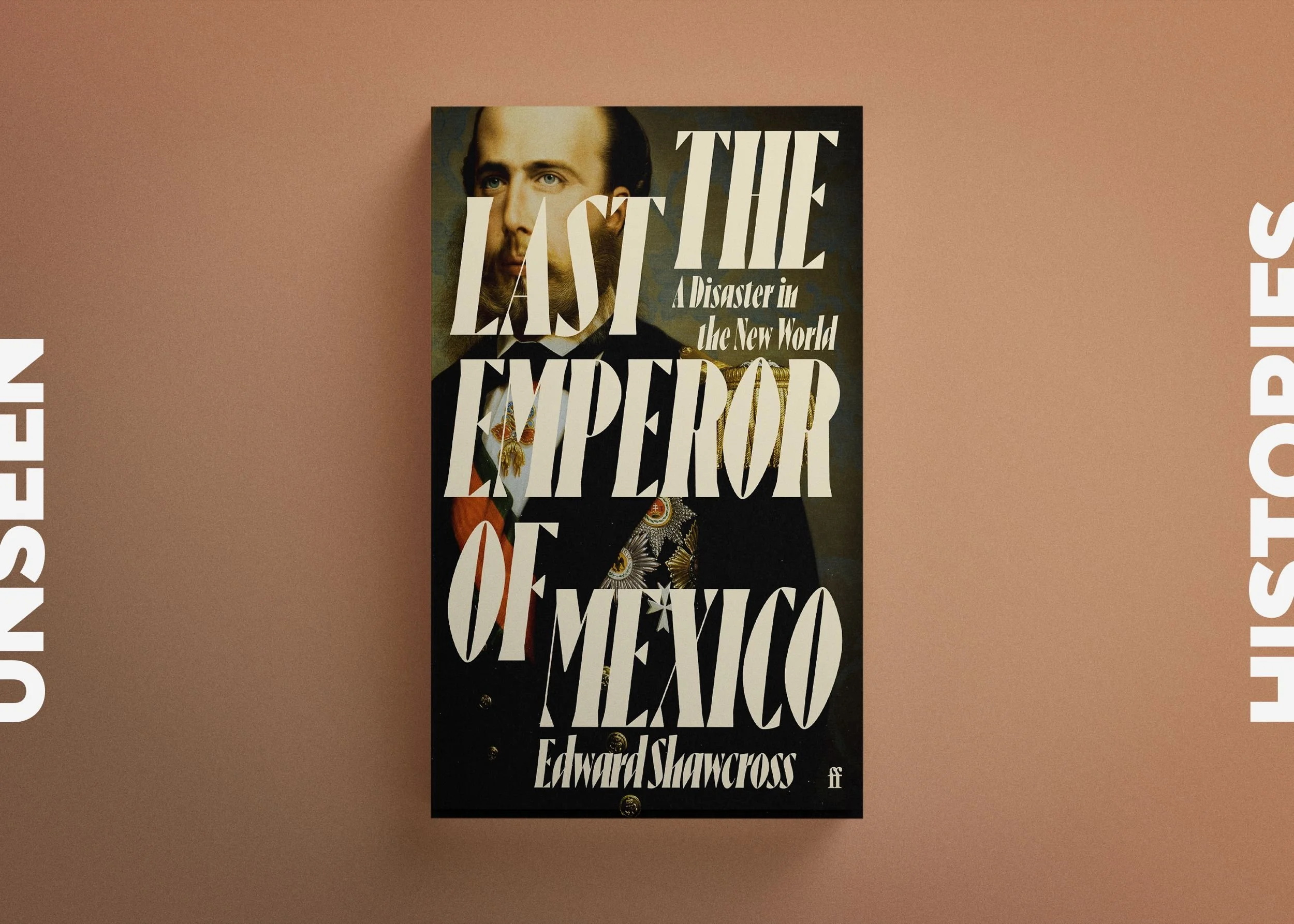The Last Emperor of Mexico: Edward Shawcross (1867)
In this episode we’re off to the nineteenth century to examine an event that Karl Marx called ‘One of the most monstrous enterprises in the annals of international history.’ Edward Shawcross takes us back to meet Maximilian, the Last Emperor of Mexico.
*** [About our format] ***
As the nineteenth-century got underway, global geo-politics began to shift. In particular the American continent – still broadly referred to by Europeans as the ‘New World – began to forge its own, fresh, modern identities, with countries like Argentina and Mexico securing their independence from Spain.
The most obvious emerging power, however, was the United States of America. In the fifty years since the thirteen colonies had won independence from Great Britain, the USA had developed at an astonishing pace. Eyeing even more territorial advances, in the 1820s a new policy known as the Monroe Doctrine was adopted in Washington DC. This dictated that the USA was no going to stand for any more European intervention in the Americas.
As the historian Edward Shawcross explains in this episode of Travels Through Time, the Monroe Doctrine generated a sense of unease in Europe. One linguistic response to it can be found in the term ‘Latin America.’ This neologism was invented to foster a sense of unity and belonging, embracing strategically important nations like Mexico with a European-centric, Catholic identity. Just as importantly, the term distinguished the region from the democratic, republican ideals that were epitomised by the USA.
Read an exclusive extract from “The Last Emperor of Mexico” on Unseen Histories
By mid-century there was need for such a response. Mexico had fared disastrously in a war against their northern neighbours in the 1840s and the question was left hanging: where were the United States going to expand into next?
When the US Civil War began in 1861, to many it seemed the perfect time for a countermove. Central to this was the daring French leader, Napoleon III. A man filled with his own sense of destiny, Napoleon was brought into a scheme in the early 1860s to place a European-style emperor on an invented throne in Mexico. While such an idea seem absurd to us today, as Shawcross explains, the reasons for it at the time were at least logical. For Napoleon III, here was the prospect of a fabulously wealthy Latin empire on the cheap.
But who was to assume this invented position? At length a suitable candidate was found. Maximilian of Austria was a dreaming, good-natured prince with striking blue eyes and a zest for travel. For Napoleon, Maximilian had three qualities which marked him out. Most importantly he was a senior member of the old Habsburg dynasty; a family that had once ruled the fabulous Spanish empire. Secondly Maximilian was a Catholic. Thirdly, and crucially for Napoleon’s purposes, he was available.
In October 1863 the project was put into execution. In this episode Shawcross takes us back to the year 1867 to witness the tragic ending of Maximilian’s extraordinary story.
*
Click here to order Edward Shawcross’s book from John Sandoe’s who, we are delighted to say, are supplying books for the podcast.
*** Listen to the podcast ***
Show Notes
Scene One: 13 February 1867, Mexico City (and its outskirts). Ferdinand Maximilian, so-called emperor of Mexico, rides out to confront his enemies.
Scene Two: Early morning of May 15 1867, Querétaro. Maximilian is cornered in a shell-shattered former convent.
Scene Three: 19 June 1867, Querétaro another convent, this one is Maximilian’s prison cell. This is the day of his death.
Memento: Maximilian’s silver crucifix.
People/Social
Presenter: Peter Moore
Guest: Edward Shawcross
Production: Maria Nolan
Podcast partner: Unseen Histories
Follow us on Twitter: @tttpodcast_
Or on Facebook
See where 1867 fits on our Timeline
About Edward Shawcross
After graduating from the University of Oxford, Edward Shawcross lived and worked in France, then South Korea and finally Colombia before returning to London where he completed a PhD at UCL. His research specialised on French imperialism in Latin America and the Mexican intellectual thought that underpinned the Second Mexican Empire.
Nineteenth-century Mexico
Adapted from an original map at the Library of Congress
Ferdinand Maximilian
Édouard Manet’s Exécution de l'Empereur Maximilien du Mexique
Listen on YouTube
Complementary episodes
Chasing Doctor David Livingstone: Petina Gappah (1871)
Petina Gappah takes us in pursuit of the Scottish missionary and explorer David Livingstone in the year 1871. We follow the journalistic chancer Henry Morton Stanley as he attempts to find Livingstone and pull of the newspaper scoop of the year.
Manifest Destiny: Professor James Shapiro (1845)
1845 marked a turning point in the development of the USA. After the colonial era, the Revolutionary War and the hard days of the early Republic, by the 1840s the United States was growing fast. The choices that now faced the American people were momentous: what kind of a nation was theirs going to be?
Commodore Perry’s Expedition to Japan: Lesley Downer (1853)
Commodore Matthew Perry’s expedition to Japan changed the course of the island’s history. Long into the nineteenth century Japan had been regarded by the growing group of Western nations as a hermit kingdom, known for its stubborn resistance to outsiders. In 1853 this changed.













